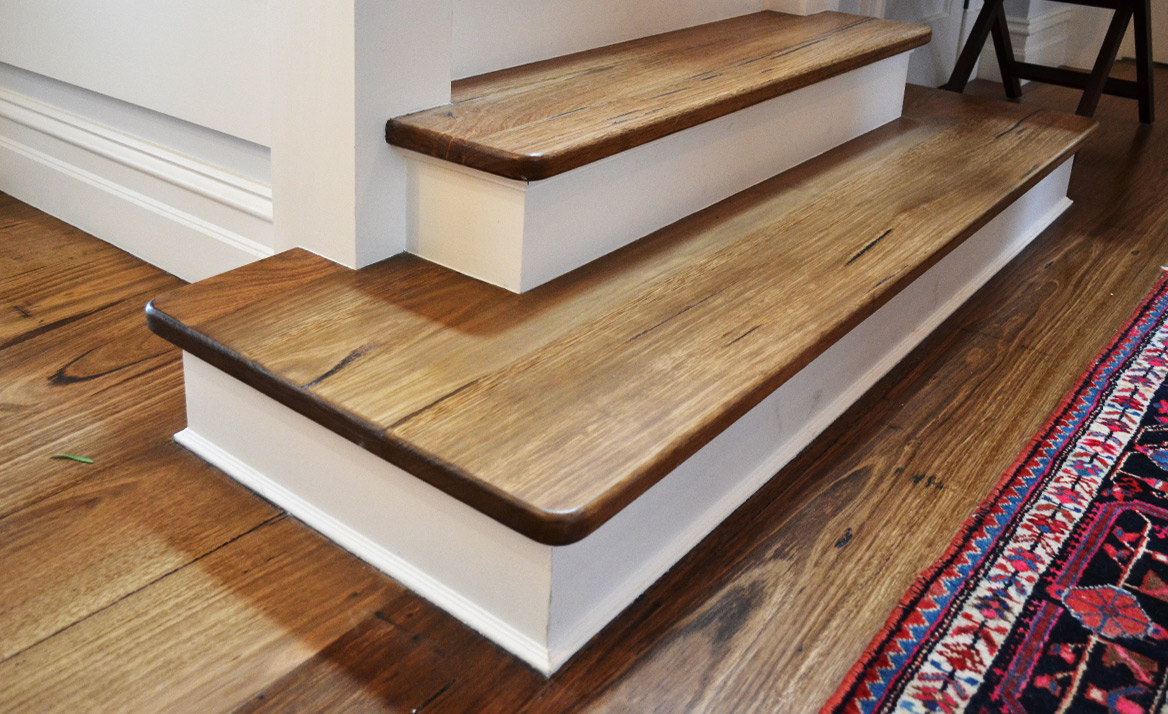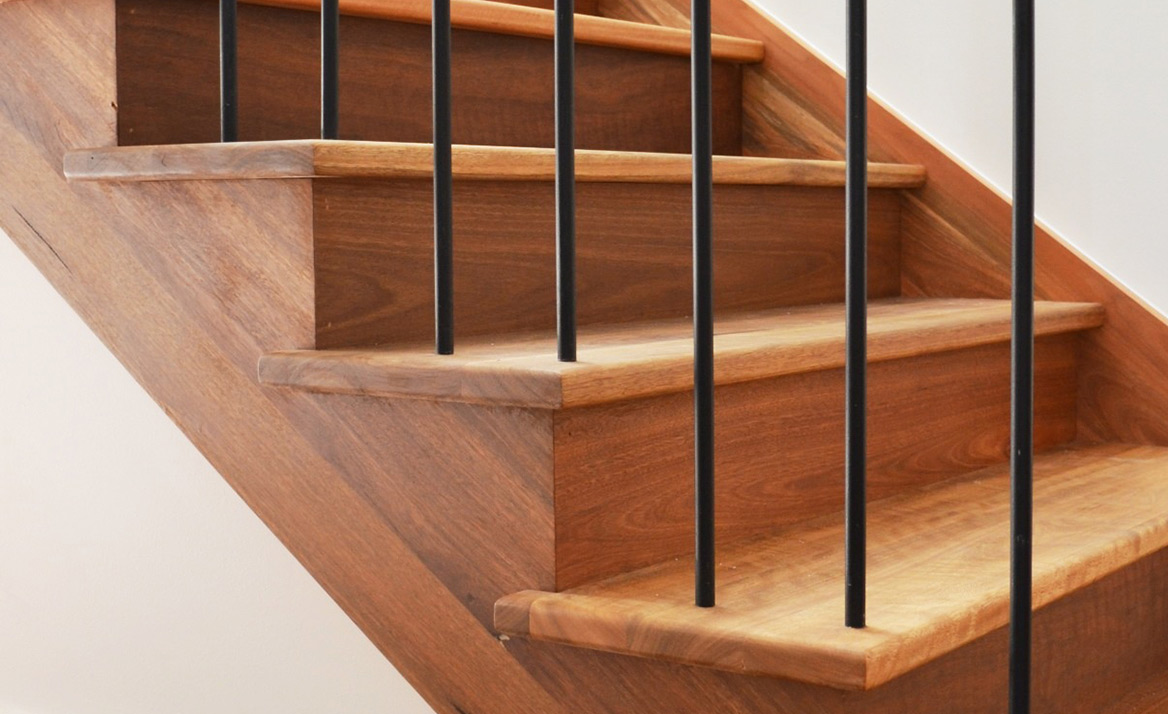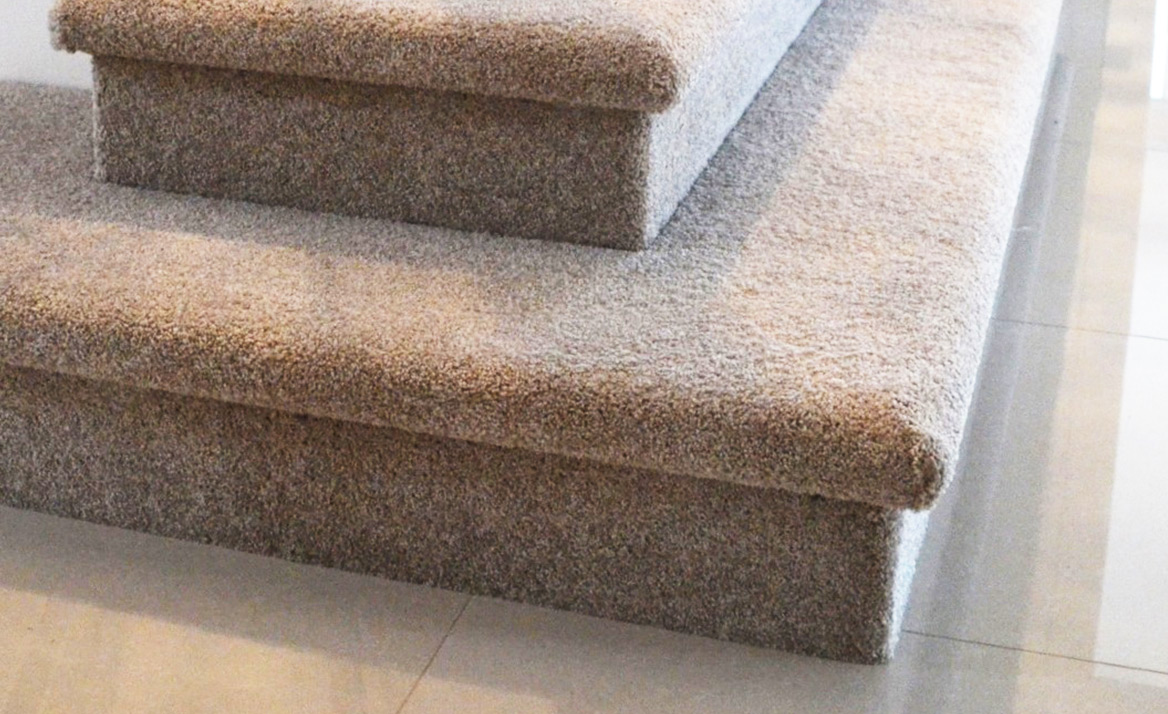Showroom visits are by Appointment Only

Blog
What Is The Purpose Of Stair Nosing?
We are often asked what the purpose of stair nosing is and why it is such an integral part of staircase design. Basically, you cannot build a staircase without nosing – this is the name given to the very edge of the treads, where we most often place our feet as we walk up and down the steps. There are a number of options available, each of them offering its fair share of advantages.

Option #1 – Pencil Round
This option got its name because it resembles a pencil that has been laid sideways across the tread. The most popular option amongst homeowners of today, this nosing suits staircases in all sorts of homes. It works well when stained to match the rest of the stairs or when carpeted – the choice ultimately depends on the sort of ‘look’ you’re going for.
Option #2 – Square
This option is fast growing in popularity because of an increase in the number of modern and contemporary homes being built, as it suits these sorts of staircases best. Although the stair nosing protrudes over the edge of the tread, it’s only about 30mm high so you can rest assured that it won’t pose a tripping hazard. It can be carpeted, although this has a tendency to round the edges.

Option #3 – No Overhang
This option is another that is fast growing in popularity, either because homeowners want a seamless look for their staircase or they’re concerned that the other options pose a tripping hazard. This nosing sits flush with the treads, making it popular in more modern and contemporary homes. It works well when stained to match the rest of the stairs or carpeted.
Other than being a necessary part of the structure of a staircase, does stair nosing serve any other purposes?
Improved Safety
The main purpose of a nosing is to improve the safety of the staircase. As it protrudes a little over the edge of the tread, it provides some extra space for users to place their feet. Not only does this make walking up and down the stairs more comfortable (particularly if you’re tall), it can help to reduce the occurrence of accidents from slips and falls.

Protects the Staircase
Secondly, the presence of a carefully chosen stair nosing can help to protect your treads from damage and general wear. As this is where most people place their feet, it goes to reason that the edges are exposed to significant amounts of force (plus, whatever happens to be on the bottom of people’s shoes). The occurrence of less damage can mean less maintenance down the track.
Improved Visibility
Research has suggested that a number of people are seriously injured each year as a result of missing a step or misjudging its width and falling down the stairs. A nosing can actually improve the visibility of each tread, clearly defining where it ends and giving users the confidence to walk up and down. This is particularly useful for those with bad eyesight or in poor lighting.